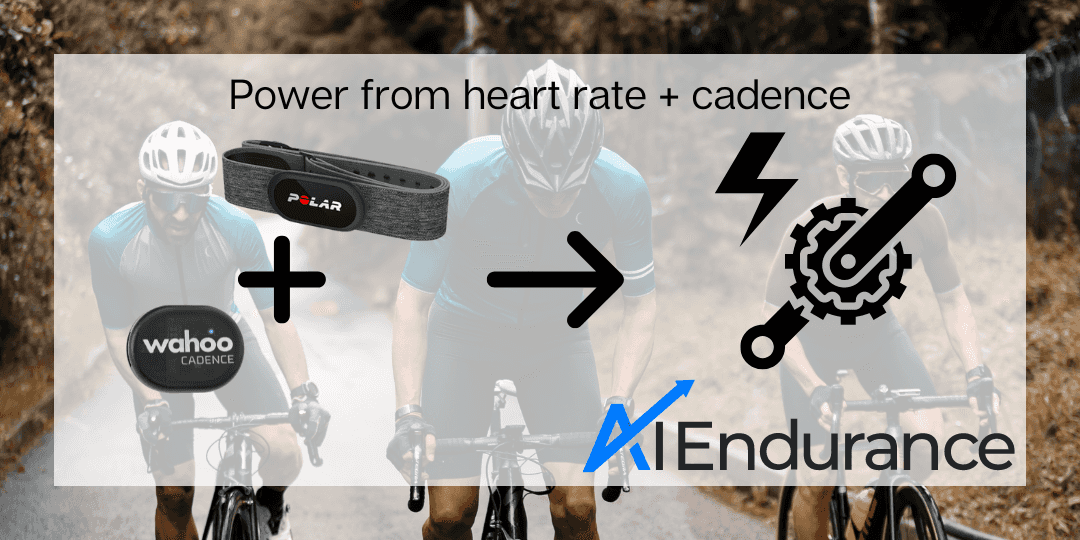
Power meters are costly and we often can't afford one on every bike we own. AI Endurance calculates cycling power from activities without a power meter using heart rate, cadence and DFA alpha 1. The results are generally more accurate than speed based estimates such as Strava's estimated power. All you need is a heart rate monitor and ideally a cadence sensor on your bike and AI Endurance will estimate your power for every ride.
We need lots of bikes and we want more (N+1). A road bike for the road, an MTB for the trails, a TT bike for the triathlon races, a CX bike for cyclocross, a Gravel bike (what's the difference again) for dirt roads, a commuter bike, a winter bike, and so on and so forth - we get it!
Ideally you'd have a power meter on every bike since power is the best indicator of your fitness and training but there is a high cost involved. AI Endurance's training plans are based on power as it is the only metric that is truly predictive of cycling performance.
Our solution is to predict and calculate cycling power from heart rate, cadence and/or DFA alpha 1 (a1). Heart rate monitors and cadence sensors are affordable and portable between bikes. All you need is the following:
That's it - now we'll calculate your cycling power for rides without a power meter and take them into account for your optimized training plan and our performance predictions.
To be clear, power measurements from an accurate and calibrated power meter are naturally superior over this method. Power meters exist for a reason, so if you can get measured power data on every ride that's what we recommend.
AI Endurance learns to predict power from your past activities that have power, heart rate and/or cadence and a1. These include rides outdoors with a power meter or indoor rides on a smart trainer while wearing a heart rate monitor. For outdoor rides, gradient can provide an additional data input to improve the prediction accuracy. From these inputs, we train a machine learning model that predicts power from heart rate, gradient, cadence and a1. Especially heart rate is highly individual, hence every user gets their personalized model (digital twin). Finally, the power to heart rate relationship may vary significantly over the months and years as fitness varies. Hence, time is another variable we take into account. For example, a year ago, a typical power output for 140 bpm may have been 180 W, while now being in a fitter state, the output may be 200 W.
To infer the power values in an activity without power data, we automatically use the model that has the lowest prediction error for every user. The model options are:
Generally speaking, the more data inputs there are, the more accurate the estimated power values. Let's discuss a few examples:
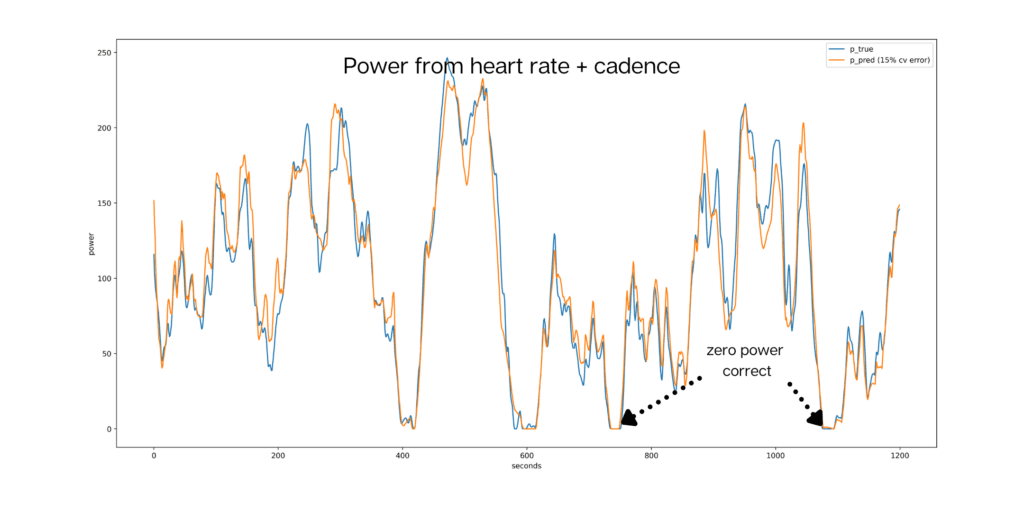
This is an example of predicting 20 minutes of activity time from heart rate and cadence. 'p_true' is the true, measured power from a Stages power meter. 'p_pred' is our machine learning model prediction. The prediction error is the cross validation error for time series. The model is trained on 300 hours of ride data of one individual.
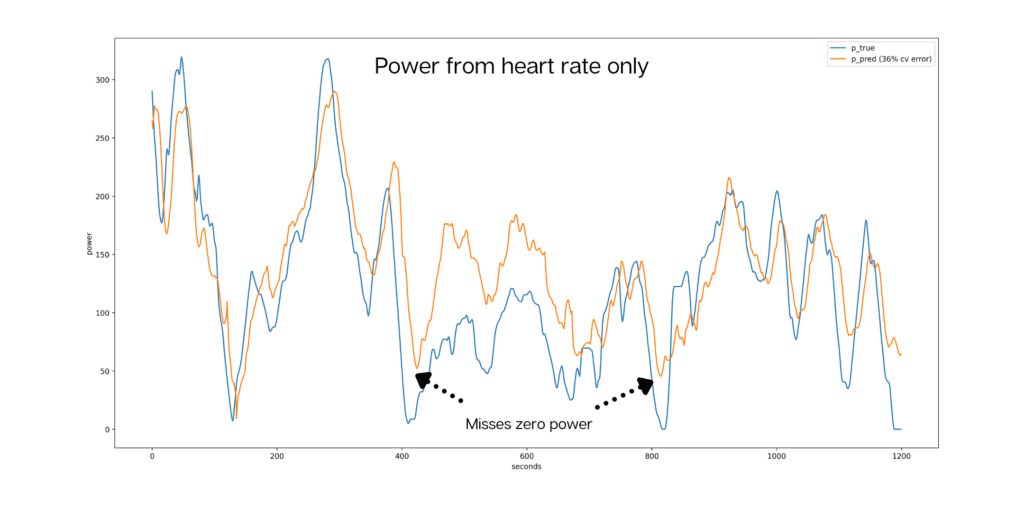
A different 20 minute of activity time. The power is predicted from heart rate only this time. As we can see, the predictions are much less accurate relative to the model with cadence. In particular, the model over-predicts when the true power output is zero and below 100 W.
Gradient provides similar information to cadence in the sense that it correlates strongly with zero power outputs. For example, the vast majority of steep descending at less than negative 10% gradient will happen at zero power output. Most steep uphill gradients will also correlate with relatively high power outputs.
There are a few principal challenges that systematically bias the approach to calculate cycling power from heart rate (and gradient, cadence and a1):
Strava calculates cycling power without a power meter as a rough approximation from weight, speed, and elevation change. This approach is limited due to the significant influences and variability of
on the power to speed relationship. For a more detailed discussion, see this article. Once again, power meters were invented for a reason after all.
Strava's estimated power approach is less computationally expensive as it boils down to evaluating a simple formula without having to train a personalized model for each user. Hence, the lack of accuracy is not surprising. It is worth mentioning though that Strava estimated power comes at no cost to the user.
With the power from heart rate, cadence and a1 approach, we can bypass almost all the external influences that trouble Strava's estimated power listed above. Temperature, altitude and humidity however can influence heart rate and there are other biases such as cardiac lag and drift, as discussed above. In most real life situations, the above external influences cause significant biases in the speed based calculation and it is more accurate to calculate power without a power meter from heart rate, cadence and a1 from a personalized model for each user.
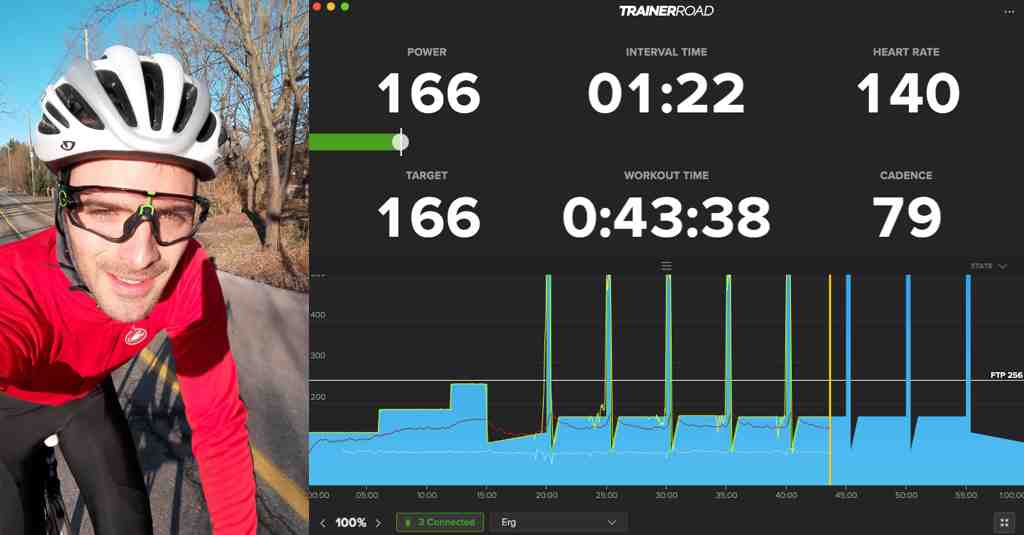
In this post, we explain how to use AI Endurance’s cycling training plan that we generated for Paris to Ancaster, Canada’s biggest gravel racing event. The plan includes detailed workout instructions. For indoor cycling, we show how to use AI Endurance with Trainerroad and Zwift.

by Markus Rummel. DDFA (Dynamical Detrended Fluctuation Analysis) is a new method to analyze the changes in your HRV data during exercise. It is an evolution of the DFA analysis based on the research in [1, 2] used by AI Endurance.
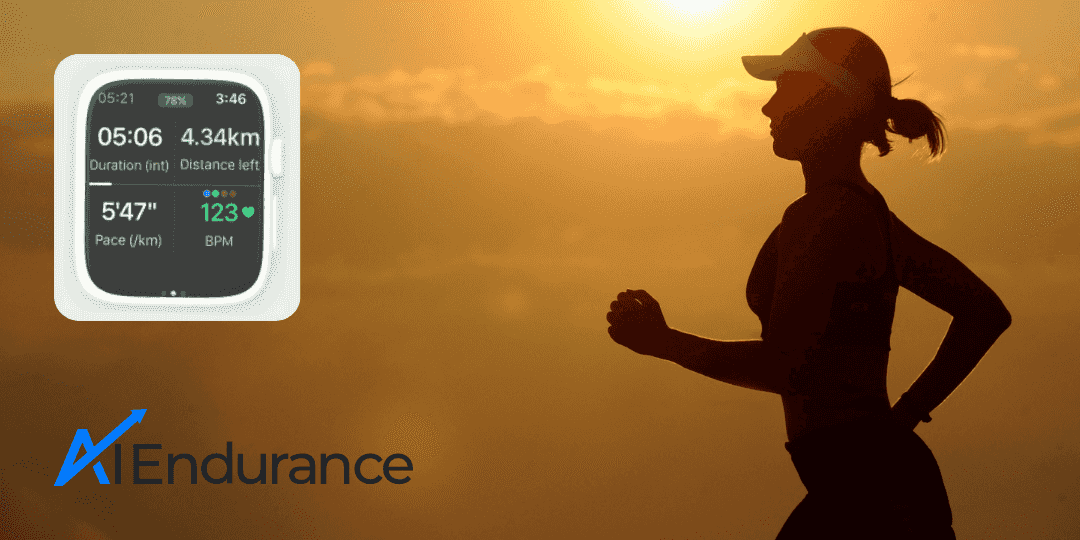
Apple Watch has been a popular choice in running and triathlon. You can now track and execute your AI Endurance custom running, cycling and swimming workouts on your Apple Watch.
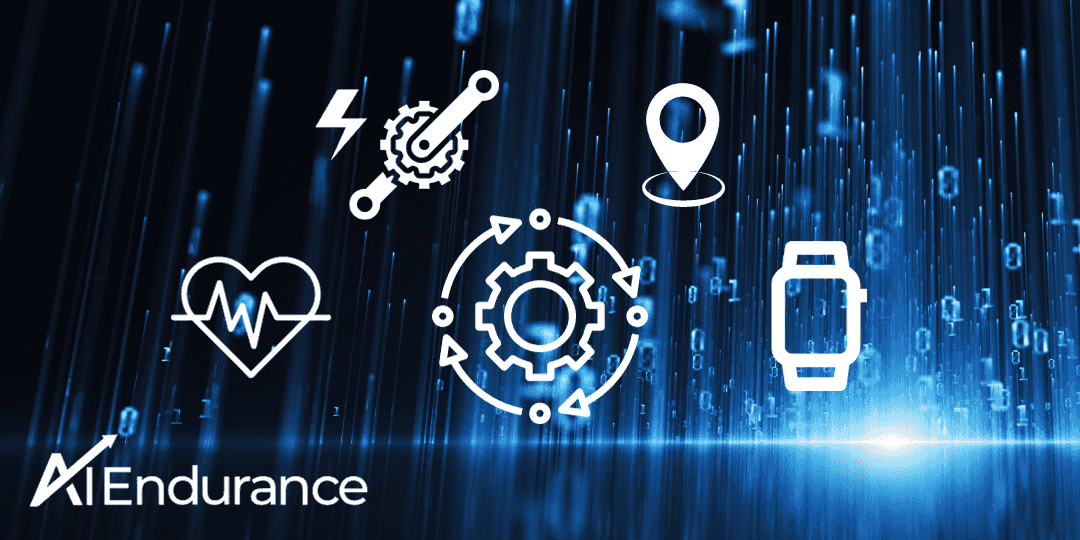
AI Endurance is a data-driven training platform. In order to maximally benefit from the training and have the program be most personalized to you, you'll want the best possible data to flow into the platform. Here's a few recommendations on how to achieve this.